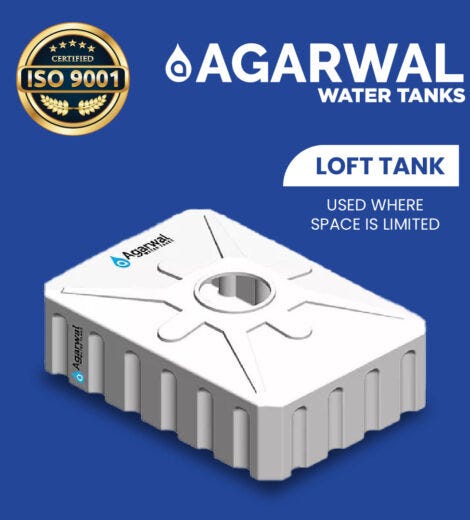Role of Underground Water Storage Tanks in Rainwater Harvesting Systems

Underground water storage tanks serve a crucial role in rainwater harvesting systems, contributing to water conservation, sustainability, and resilience in both urban and rural settings. Here’s an overview of their role in such systems:
Rainwater Collection: Underground water storage tanks are integral components of rainwater harvesting systems, where they collect and store rainwater that is captured from rooftops, paved surfaces, or other catchment areas. This collected rainwater is diverted into the underground tanks through gutters, downspouts, and filtration systems.
Storage Capacity: Underground tanks provide substantial storage capacity for harvested rainwater, allowing for the accumulation of large volumes of water during periods of rainfall. This stored water can then be used for various non-potable applications, such as irrigation, landscaping, toilet flushing, laundry, and car washing.
Space Optimization: By being installed beneath the ground, underground water storage tanks optimize space utilization, especially in urban areas where land is limited and valuable. This discreet placement minimizes visual impact and maximizes land use efficiency, making rainwater harvesting feasible even in densely populated environments.
Protection of Water Quality: Underground tanks offer protection against external contaminants, sunlight exposure, and temperature fluctuations, thereby safeguarding the quality of stored rainwater. Filtration systems and sediment traps installed within the tank help remove debris, sediment, and pollutants, ensuring that the collected rainwater remains clean and suitable for its intended uses.
Preservation of Aesthetics: Concealed beneath the surface, underground water storage tanks preserve the aesthetic appeal of residential, commercial, and public spaces. Unlike above-ground tanks, they do not disrupt visual harmony or detract from architectural design, allowing for seamless integration with surrounding landscapes and structures.
Year-Round Water Supply: Underground tanks enable the year-round availability of water by storing excess rainwater during wet seasons for later use during dry periods. This helps mitigate water scarcity, particularly in regions prone to seasonal fluctuations in precipitation or facing water supply challenges due to climate change or population growth.
Stormwater Management: Incorporating underground water storage tanks into rainwater harvesting systems contributes to effective stormwater management. By capturing and temporarily storing rainwater, these tanks reduce the volume of runoff entering storm drains, thereby alleviating pressure on municipal drainage systems and mitigating the risk of urban flooding and erosion.
Sustainability and Resilience: Rainwater harvesting systems with underground storage tanks promote sustainability by reducing reliance on freshwater sources and municipal water supplies. They offer a decentralized water management approach, enhancing community resilience to water shortages, droughts, and disruptions in water supply infrastructure.
In summary, underground water storage tanks play a pivotal role in rainwater harvesting systems, facilitating the collection, storage, and utilization of rainwater for various beneficial purposes while minimizing environmental impact and promoting water sustainability. Their integration into such systems contributes to water conservation, resilience, and self-sufficiency, making them valuable assets in the quest for more sustainable water management practices.
Comments
Post a Comment